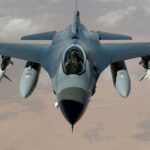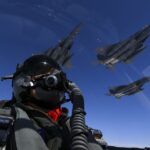In the world of defense and weaponry, technological advancements can mean the difference between victory and defeat. The Air Force plays a monumental role in national security, and they continually strive to transform their operations through technological innovations. Some of these advancements focus on enhancing strategic capabilities, while others increase safety and efficiency.
Artificial Intelligence (AI) and Machine Learning (ML)
One of the more significant advanced technological innovations is the incorporation of Artificial Intelligence (AI) and Machine Learning (ML) into the operations of the Air Force. AI and ML technologies serve as a digital backbone for many modern military systems, assisting with functions such as threat assessment, risk management, logistics, maintenance, and more.
Project Maven
Prominently, the Air Force is utilizing AI in Project Maven, which focuses on interpreting large amounts of video data collected by drones. It uses machine learning algorithms to detect, track and classify objects, which saves analysts countless hours of manual work and enables faster decision-making processes.
Directed Energy Weapons
Directed Energy Weapons (DEWs) are a significant stride for the Air Force. These weapons use highly focused energy, including lasers and microwaves, to disable enemy devices and equipment. They have been gaining traction as they offer precision, speed, and flexibility with minimal collateral damage.
High Energy Laser Weapon Systems (HELWS)
The Air Force has invested in testing High Energy Laser Weapon Systems (HELWS) on their aircraft. These systems offer non-lethal options for disabling enemy drones, effectively neutralizing potential threats. HELWS can precisely track, target, and disable drones in a matter of seconds, showcasing its potential as a future defense mechanism for the Air Force.
Unmanned Aerial Vehicles (UAVs) and Drones
The use of Unmanned Aerial Vehicles (UAVs) and drones in combat and reconnaissance missions is another innovation that has revolutionized the air defense sector. From delivering precision strikes to collecting critical intelligence, these remotely controlled systems increased operational efficiencies while reducing risks to personnel.
MQ-9 Reaper Drones
Significantly, the MQ-9 Reaper Drones, equipped with advanced sensors and payload capacity, provided the Air Force with long-endurance, real-time intelligence gathering capabilities. These drones can patrol vast areas and strike specific targets accurately, minimizing civilian casualties and infrastructural damage.
Autonomous Systems
Recently, autonomy has become a key area of focus for the Air Force. Autonomous systems can make real-time decisions based on the data they gather—without needing human intervention, thereby, reducing potential risks to personnel.
XQ-58A Valkyrie
The XQ-58A Valkyrie is a notable example of these autonomous systems. This autonomous drone, designed to fly alongside the manned aircraft, provides teammates and plays an integral role in tactical missions. It has the ability to handle dangerous tasks, offering superior leverage during engagements and significantly minimizing risks to personnel.
Cyber Warfare
Cyber threats are one of the biggest challenges that nations face today. Recognizing this, the Air Force has devoted resources to advance their cyber warfare capabilities. This involves protecting their infrastructure from cyber-attacks, espionage, and carrying out offensive operations when necessary.
Cybersecurity Strategy
The Air Force’s Cybersecurity Strategy’s main objective is ensuring the integrity and availability of data. They work continually on the development of advanced protections, threat detection systems, and robust digital forensics.
These are just a few examples of how the Air Force is harnessing advanced technologies to improve their operations and ensure the safety and security of nations. As technological capabilities continue to evolve, the Air Force is set on a path of relentless innovation, ready for the challenges of the future.


